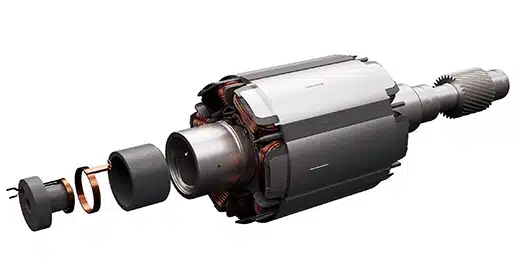by Ramdesh Kaur: This series is dedicated to sharing the knowledge contained in “The Aquarian Teacher”, the teacher training manual shared by

all students of the KRI certified Kundalini yoga teacher training program.
This article is focused on Chapter 9 of the manual. You can discover the wisdom in greater depth by taking the Kundalini Yoga Teacher Level 1 Training course.)
“The Teachings are the Teachings, and have no one’s personality in them. It is a Golden Chain.” ~Yogi Bhajan
What is Kriya?
Kriya means action. But a kriya is not just any action; it is action that leads to manifestation. Just like the seed for a sunflower blooms into a sunflower, the kriya for intuition results in enhanced intuition. To break it down, a kriya is a codified sequence of postures, pranayam and mantra that integrate together in a specific energetic way. When you focus on a particular kriya and practice it, the energy within your body responds by moving in a very precise way.
In other forms of yoga, kriya is used to mean cleansing. Both translations work, for indeed a kriya is an action that cleanses the mind, body and spirit of blockages that might prevent it from manifesting its own highest potential. Truly practicing kriya is a state of non-resistance. When the kriya calls for difficult work, extra energy is expended. When the kriya calls for rest, energy is conserved. There is no partial action; you are in a state of flow. Your whole-hearted presence within the kriya brings a state of grace and ease.
The Role of Asana (Posture) in KriyaA kriya is not random. Things must go in a precise manner, to work this machine of a body in the right way. Do not change a kriya. There are often acceptable modifications, but you cannot take it apart and reassemble it in a different way and create the same effect. A kriya is a perfect science into itself.
Asana serves four roles in a kriya. In an exercise, an asana is used to isolate specific muscles and put pressure on particular meridian points. It may also serve to increase circulation or move lymph. In a meditation, posture creates the foundation for the practice. Each meditation asana triggers a specific location in the body where blocks and triggers may be removed. In energy flow, an asana provides a pathway for prana to circulate throughout the body. It is said that babies in the womb perform 84 asana and if they skip one, then it will result in energy blockages that will need to be dealt with later in life. Some postures may be unexpectedly powerful for some people and it may be due to their time in utero.
Time and again, Yogi Bhajan emphasized keeping the teachings as they are with the exception of reducing the times of the postures. When you first begin an asana, you might feel awkward if you’ve never done it before. Settle into it and allow the muscles you aren’t using to relax. Allow yourself to become aware of the muscles you are using. You will settle into the posture and in that simple act of settling it, you will establish an important connection to yourself.
As you engage asana in a particular way in a kriya, it will take you apart and put you back together in a more complete fashion. It is a dynamic reordering of the human body.
yoga is a science of angles and triangles, a kind of geometry for the human self. Every angle that is created within your body through asana has a specific effect. Take your legs. If you lift them 30 degrees you are influencing the navel point. If you lift them 60 degrees, its your heart and lungs that are getting the benefit. Extend your arms out to the sides and you are engaging your heart meridian and uprooting deep seated emotions. Essentially your entire body can be seen an a geometric grid. Finding the triangles within your body (say between the navel point and the hips) allows you the understand alignment. If the triangles are not evenly aligned, it will result in an energy imbalance. A good visualization game to play is to sit in easy pose and tune into your body. Where can you find your hidden triangles? What parts of your body connect and relate in a geometric way? Many people explore sacred geometry in the outer world. Tune into your own body and discover your own sacred geometry.
Some poses are more advanced than others. This does not mean that those who can do advanced asana are more “advanced” as a human being. If that were true, then all acrobats would be enlightened. Some people that can easily hold Wheel Pose for several minutes can’t curl their tongue for Sitali Pranayam. We’re all working our stuff out in different ways. Competition and comparison have no place in Kundalini yoga. This is about you going through your blocks and discovering asana from the inside out. You know why you keep your eyes shut more often than not in Kundalini yoga? So you don’t look around for external validation. Kundalini yoga is between you and you. It doesn’t matter if you can’t do Bound Lotus when you start. Through discipline and consistency, what YOU can do will open and increase and whatever personal goals you have can manifest. Advanced asana is a beautiful thing. Move gently into it and watch yourself shift, change and deepen in time.A Note about “Advanced” Asana
A Word About Warmups
Yogi Bhajan never taught warmups before a Kundalini yoga kriya. He did acknowledge that they can be useful in some instances. If as a teacher, you determine that warmups are necessary, here are some good choices: short kriyas, pranayam, sun salutations (Surya Namaskar), and suitable warmup asana such as cat-cow, life nerve stretch, or spinal flex.
Basic Sitting Postures
Unless specifically noted by Yogi Bhajan, during a sitting meditation you can sit in any of the following postures: Lotus Pose, Half-Lotus, Easy Pose, Rock Pose (and sometimes Vir Asan.) You may also sit in a chair with legs uncrossed and your feet flat on the ground. Please note this well: IF YOU HAVE PAIN IN YOUR KNEES AND ANKLES, YOU CANNOT MEDITATE. That’s simple, right? So you have to find a position (and sometimes this will take a lot of pillows) that is comfortable and natural for your body. We are all shaped differently and so different things will work for us. For meditation, the bottom line is your spine must be straight, the posture must be balanced, and you apply a slight neck lock. Sit on something that is not too cold or too hot. A thick pad or large pillow won’t work because it doesn’t stabilize the spine enough. If however, you are having a bunch of pain in the low back, legs, hips or ankles, find a stiff cushion that lifts the buttocks about 6 to 8 inches or a wooden meditation bench (common in Zen practices). It will relieve pressure. Sitting on a sheepskin or mat is ideal, and materials of wool, cotton and silk are best. The ideal meditation posture is Lotus Pose, as is locks the navel point, and balances the Earth and Ether Tattva through the upturned soles of the feet.
Basic Mudras
A mudra is a hand position that guides energy flow in a particular way. Our hands are a complicated map of our entire system and by utilizing hand positions we can affect many systems in the body, each representing different emotions. Each finger also relates to a planetary energy and the thumb represents individual persona or ego. The pressure should be consistent and firm but not hard enough to whiten flesh. It is also worth noting that a mudra is done with the fleshy part of the finger (not the fingernail) unless specified. Some of the most common mudras are Gyan Mudra (forefinger and thumb touch, for wisdom), Shuni Mudra (middle finger and thumb touch, for patience), Ravi Mudra (ring finger and thumb touch, for energy), Buddhi Mudra (pinkie and thumb touch, for intuition), and Prayer Pose (Pranam Mudra, palms together at chest, for centering).
Bandhas (Body Locks)
“It is a fundamental law of most exercises in Kundalini Yoga that you will apply mulbandh, though it is not asked for it in detail in all instances. You will be told to put yourself in a posture with a certain sound current and a certain breathing pattern. But all the kriyas have certain things in common which are assumed. First is the proper posture and second the locks. You are required to apply these three locks properly and appropriately. Then one is said to be in the state of mahabandh- Great Lock. This yoga was designed carefully by saints and masters and is the fastest route to elevation and happiness.” ~Yogi Bhajan
One of the main aims of yoga is the create energy within the body and aura and direct the flow of life in conscious ways. We are able to expand our energy of life force in both quality and quantity. Healthy meridian flow keeps our bodies running on this energy smoothly. Our bodies develop a state of harmony and from this place our meditation practice becomes deeper and we are able to experience the light of the soul. The bandhas or locks are applied to the body to direct the flow of prana and apana. Prana is a flow of energy into the body and apana is the flow of energy out for cleansing. When these forces are in balance within our body, we achieve a heightened state of balance and neutrality. As such, the yoga bandhas are important tools for health, wholeness and self-mastery.
Bandhas are locks within the body that steer prana and apana, allowing the energy to accumulate from meditation and establish an equilibrium in the body so that the effects are meditation are retained and spread within the body. Prana and apana flow through the sushmuna, which is the central energy channel which runs up the spine, and is the same path the Kundalini energy, which lies at the base of our spine, takes on its trek to the Crown Chakra or Tenth Gate. Risen Kundalini energy creates a feeling of blissfulness and heightened intuition. In Kundalini yoga, we apply bandha or body locks during kriya in specific ways to move the flow of Kundalini energy up our spine in a controlled and precise fashion.
The three main locks are: Neck Lock (jalandhar bandh), Diaphragm Lock (uddiyana bandh), and Root Lock (mulbandh). When all three locks are applied, it is called Great Lock (mahabandh). Body locks also serve to preserve proper alignment and assist the body in protection of the spine during challenges postures or asana.
Root Lock – Mulbandh
A somewhat complex lock, the root lock balances the energies of the rectum, sex organs and Navel Point. It helps correct imbalances of sexual energy, whether too much or too little. It’s key purpose to balance the prana and apana energies in the Navel center. It also stimulates the proper flow of spinal fluid, protecting the spine during yoga asana.
To apply root lock:
Contract the muscles of the anus, then tighten the muscles of the sex organ, which will feel like a slight lift and rotation back of the pelvic bones. The tailbone will curve towards the floor. Then contract the muscles of the lower abdomen (below and including the Navel Point) back towards the spine. Do these three actions in a smooth, rapid succession. Breath may be in or out. Do not apply Mul Bandh if you are pregnant or on the first day of your menstrual cycle.
Diaphragm Lock – Uddiyana Bandh
A more advanced bandh, this body lock raises the energy up the abdomen, massaging the intestines and the heart muscles. It crosses the mid-body barrier, which is an energetic place above which actions are more conscious and below which actions are more unconscious. It is an important emotional integration tool and allows circulation to the sushmuna, in addition to cleansing the body. When applied it stretches the muscles between the ribs so that the entire rib cage can expand. As you pull the lock, the solar plexus is engaged and it strengthens the fire element and opens the heart chakra.
To apply diaphragm lock:
Make sure you are not pregnant, menstruating, or full from eating. This breath is only applied with the breath fulled exhaled and held out. Inhale deeply, then exhale fully and pull the diaphragm up and back towards the spine. Although you don’t directly engage the Navel Center, it will shift as the muscles of the diaphragm move. Keep the chest lifted and hold for 10-60 seconds based on your endurance and only hold as long as you are not straining, but are still able to hold the body in equilibrium. When finished relax the abdomen and exhale.
Neck Lock – Jalandhar Bandh
This is a basic lock and very commonly applied. As a general rule, Jalandhar Bandh is applied while chanting or doing pranayama. It assists good posture of the spine while sitting in meditation. It can act as a safety valve, regulating blood pressure to avoid sudden shifts that can occur while doing kriyas and other strenuous movement. It also, when properly applied, prevents dizziness that may result from a practice. It allows the energy to flow up to the base of the brain unobstructed.
To apply neck lock:
Sit comfortably with a straight spine and lift the chest and sternum upwards. Stretch the back of the neck up, bringing the chin slightly to the back of the neck. Don’t tilt your head down or to the side, simply balance the head and keep it centered. Relax your shoulders and upper back. The neck lock should not be forced, constrict your breath or otherwise be uncomfortable. Don’t strain!
Master Lock – Mahabandh
This is an application of all three locks above at the same time, holding the breath out. It is generally practiced after pranayama and other exercise and may be combined with other postures and mudras. With all of the locks applied, the body is in a perfect healing state. It is said to rejuvenate the body and its mastery can cure blood pressure problems, menstrual cramps, poor circulation and other ailments. The glands, nerves and chakras are all restored.
To apply Master Lock:
Apply Mul Bandh. Apply Uddiyana Bandh. Apply Jalandhar Bandh.
Want to work on all the locks? Practice Doei Shabd Kriya. Ask your Kundalini Yoga teacher to show you how to do it, or dive into it in depth in the Kundalini yoga Teacher Training Program!
Putting it All Together: Teacher’s Corner
So let’s say you want to practice a Kriya that combines asana, mudra and bandha? While there are no shortages of options, one of the most fundamental and also most powerful is Sat Kriya. This is an essential part of any Kundalini yogi’s toolkit. When I was in Teacher Training with Gurmukh in Rishikesh, I asked her to prescribe a personal sadhana to me. She gave me 11 minutes of Sat Kriya. It was a perfect gift! As Yogi Bhajan said, “Sat Kriya is to purify your being. Disease, ailment, weakness, impotency, laziness and negativity — all improper things will leave you.” Try it! I’d also suggest taking a look at Guru Prem Singh’s book “Divine Alignment.” You’ll learn so much about the structure of the body!
















































